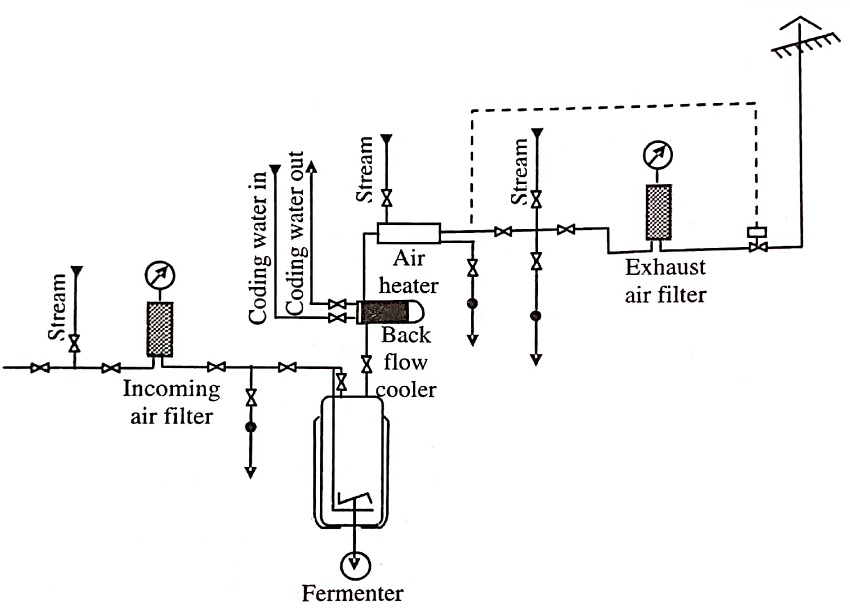Industrial fermentation processes are mostly operated under vigorous aeration, maintaining the supply of sterilised air to the fermenter. Air filters should be attached to air input and exhaust ports for preventing the contamination of fermentation by air-borne microorganisms or of environment by aerosols generated within the fermenter. These air filters made up of glass fibre, mineral fibres, Poly Tetra Fluoro Ethylene (PTFE), or Polyvinyl Chloride (PYC) can trap the contaminants. They should be steam sterilisable and easily changeable.
In conditions where pathogenic organisms are being grown, fermenter exhaust should also be treated with dry heat sterilisation (incineration). This is an additional safety method used for sterilising gases including filtration, gas injection (ozone), gas scrubbing, radiation (UV), and heat.
Out of these methods, filtration and heat are used on an industrial scale. Earlier sterilisation of air was carried out by passing it over electrically heated elements; however this method became out-dated due to the high electricity cost. This was replaced with filtration using glass wool filters.
This method traps particles with a combined effect of inertial effects, blocking effect, diffusion, gravity separation, and electrostatic attraction.
Glass wool filters had a disadvantage of shrinkage and solidification during steam sterilisation; thus, were replaced with glass fibre filter cartridges.

[sc_fs_faq html=”true” headline=”h2″ img=”” question=”What is Fermentation?” img_alt=”” css_class=””] Microorganisms like bacteria, yeast, or fungi turn sugars or other organic compounds into energy and other substances like alcohol, acids, or gases during the metabolic process known as fermentation. Anaerobic respiration, as the name suggests, is another name for it because it takes place without oxygen. For thousands of years, people have utilised fermentation to make a variety of meals and drinks, including bread, beer, wine, and cheese, as well as biofuels and medicines. [/sc_fs_faq]
| Read More Topics |
| Citric acid (citrate) utilization test |
| Quantitative measurement of bacterial growth |
| Isolation method for pure culture of bacteria |
| Morphological classification of bacteria |





